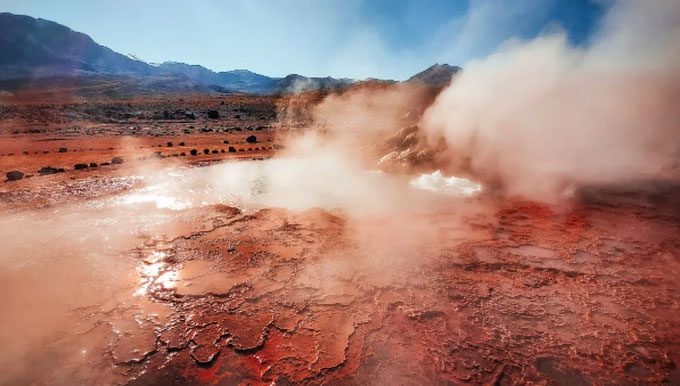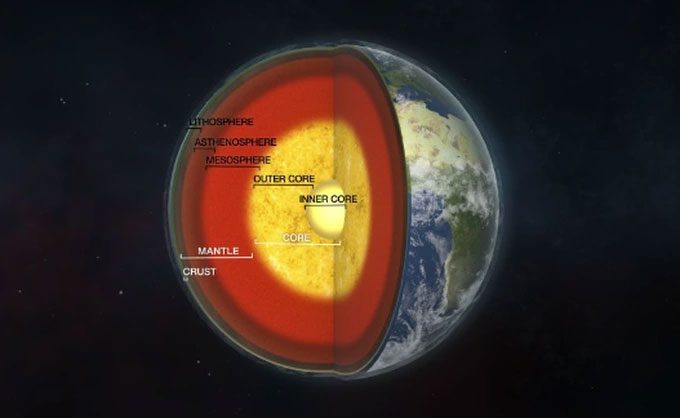A recent study has debunked a theory that was once considered the origin of continental formation on Earth.
The Earth formed billions of years ago, yet we know very little about this process, including the division of continents and oceans on our Blue Planet.

The El Tatio geyser located in the Atacama Desert of Chile is a visual representation of how continental formation may have occurred (Photo: Getty Images).
Previously, it was believed that the Earth’s crust, or the outer layer of the planet, was divided into two types: the older, thicker continental crust and the younger, denser oceanic crust.
The key difference between these two layers is the lack of iron in the continental crust. This allows the continental layers to be lighter, causing them to rise above sea level and form dry land, which in turn facilitates the emergence of life on land.
For a long time, scientists hypothesized that the crystallization of garnet in the magma layer beneath volcanoes was responsible for this entire process.
However, a new study has challenged supporters of this hypothesis and forced planetary scientists to rethink how the Earth formed.

A cross-section showing the different layers that make up the Earth. (Photo: Getty Images).
To test the validity of the garnet crystallization theory, a research team from the High-Pressure Laboratory of the Smithsonian Institution and Cornell University (USA) recreated the high pressure and heat found beneath volcanoes using piston-cylinder presses located in laboratory settings.
These pistons, the size of a mini refrigerator, are made from steel and tungsten carbide. They can generate high pressures on small rock samples by being heated by a surrounding cylindrical furnace.
According to the research team, the pressure from the experiments is equivalent to 15,000 to 30,000 times the pressure exerted by Earth’s atmosphere, with temperatures ranging from 950 to 1,230 degrees Celsius, hot enough to melt rock. Thus, it is fully capable of simulating what has occurred and is currently occurring beneath the Earth’s crust.
Additionally, the products of this process produced artificial rubies, similar to the garnet crystallization that occurred in volcanic magma.
However, surprisingly, the entire process occurred without absorbing sufficient iron and did not undergo oxidation as previously hypothesized. In other words, previous theories about the formation of Earth’s continents may have been completely wrong.
“These results make the garnet crystallization model hypothesis extremely difficult to occur under real conditions,” said geologist Elizabeth Cottrell, the lead researcher.
The geologist further explained that these results do not currently provide an alternative hypothesis to explain the formation of the continental crust. In other words, this research has raised more questions than it has answered.
“What is driving the oxidation or depleting iron? What is happening inside the mantle?” Cottrell questioned.


















































